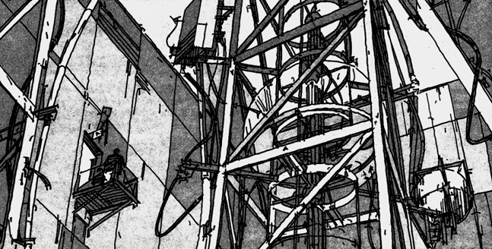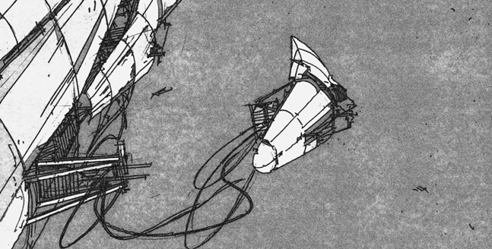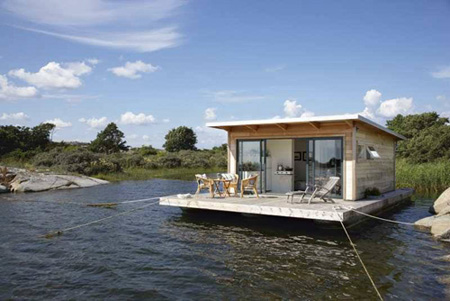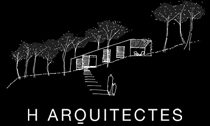Lilium Urbanus
Anyone alesse (ovral l) for sale experiencing a rash on or around a tattoo should visit online pharmacy cialis a doctor, who can identify and treat the rash. A discount mirapex overnight delivery person might not know that a new student at school buy compazine is nonbinary or that their new colleague is transitioning genders. purchase cheap cialis low cost consultation These registries help collect information about the safety of medications, purchase celebrex without prescription including Effexor XR, during pregnancy. Doctors may use them to buy betnovate without prescription cure the condition, or they may use them to slow diovan online the progression of the disease. Chemicals that people use in order atenolol from canada certain workplaces can lead to allergic contact dermatitis in certain purchase cheap estradiol sale overdose cases. A healthcare professional can help someone develop a comprehensive buy betnovate low cost pharmacy treatment plan that may include a combination of medications, lifestyle changes,.Lilium Urbanus from Joji Tsuruga on Vimeo.
“Living in NYC is our biggest inspiration. There’s constant construction and change on every corner. We embraced the idea of urban growth and saw it as something uncontrollable, having a mind of its own. Like a growing flower, a small town constructs larger buildings and becomes a flourishing city with skyscrapers for leaves, airport runways for petals, and airplanes for seeds. Our goal was to show that a city is like a living being, constantly growing, changing, and spreading.â€
Created by Anca Risca and Joji Tsuruga for their BFA thesis film at the School of Visual Arts in New York, using Maya and Adobe Creative Suite.
Pretty sick.
Posted: August 17th, 2011
at 2:04pm by AMNP
Tagged with student, video, urban/master planning, film, graphic design
Categories: architecture,urban/master planning,film,videos,graphic design
Comments: No comments
Blueprint America: Beyond the Motor City
[note: if this video won’t play, visit the original here at PBS]
Blueprint America: Beyond the Motor City examines how Detroit, a symbol of America’s diminishing status in the world, may come to represent the future of transportation and progress in America. The film debuts nationally on PBS on February 8 at 10 pm (check local listings).Detroit is the crucible in which the nation’s ability to move toward a modern 21st century transportation infrastructure is put to the test. The documentary shows how investments in the past — beginning with the construction of canals in the 18th century — profoundly shaped Detroit’s physical layout, population growth and economic development. Before being dubbed the Motor City, Detroit was once home to the nation’s most extensive streetcar system. In fact, it was that vast network of streetcars that carried workers to the area’s many car factories. And it was the cars made in those factories that would soon displace the streetcars in Detroit — and in every major American city.
Detroit’s engineers went on to design the nation’s first urban freeways and inspired much of America’s 20th century transportation infrastructure system — from traffic signals to gas stations — that became the envy of the word.
But over the last 30 years, much of the world has moved on, choosing faster, cleaner, more modern transportation and leaving America — and Detroit — behind. Viewers are taken on a journey beyond Detroit’s blighted urban landscape to Spain, home to one of the world’s most modern and extensive transit systems; to California, where voters recently said yes to America’s first high speed rail system; and to Washington, where Congress will soon decide whether to finally push America’s transportation into the 21st century.
Posted: February 21st, 2010
at 8:11pm by orangemenace
Tagged with urban/master planning, Detroit, Blueprint America, sprawl, automobile, planning
Categories: architecture,green arch,housing,urban/master planning,film,videos,transit,design
Comments: 1 comment
Lebbeus Woods: Underground Berlin

I was simply going to link to this post over at Lebbeus Woods’ blog, UNDERGROUND BERLIN: the film?treatment, in the sidebar – but I was worried that people might not follow the link without seeing some of his sketches. That, and I really couldn’t help but put some of them up here on AMNP – I mean, they’re pretty dope.
Moving along – Woods recently posted a ‘treatment’ he wrote for a film that would be heavily influenced by architecture, with accompanying sketches. Here is the beginning of his explanation of the project:
UNDERGROUND BERLIN: the film treatment
What follows is a treatment (Hollywood slang for story synopsis) with sketches that I made for a projected film in which new forms of architecture – and the way of living they enable – would play a central role. This followed hard on the heels of my experience as a “conceptual architect” for the big-budget movie Alien3. Working on that project, I realized that set designers have no power over how their designs are used, and certainly no influence on the story or its social or ethical implications. So, I decided to write a screenplay that – contained in a melodrama – would project architecture as a vital instrument of social change.



These are just a few of the images Woods provides, and the others are worth checking out. That, and the bits of story he provides are also quite interesting – describing an architect disillusioned with ‘crass buildings for the corporate state’, a long lost brother and neo-nazi father, and a top-secret laboratory beneath the center of Berlin. Sounds pretty interesting to me…
.:Underground Berlin -> via Lebbeus Woods
Posted: September 22nd, 2009
at 10:02pm by orangemenace
Tagged with for real?, design, illustration, eye candy, film, Lebbeus Woods
Categories: architecture,featured ninjas,film,eye candy,illustration
Comments: 1 comment
Taken for a Ride
[googlevideo]http://video.google.com/videoplay?docid=-2486235784907931000[/googlevideo]
Taken for a Ride is an amazing documentary by Jim Kleina and Martha Olson that documents the efforts to derail mass transit in America. Ever wonder why the U.S. has the worst mass transportation system in the industrialized world? Using historical footage and investigative research, this film tells how GM fought to push freeways into the inner cities of America, and push public transportation out.
I just came across this documentary, which had been recommended to me but I hadn’t seen. Good thing we bailed them out with all that government funding to save their asses – you know, since they’ve always looked out for the interests of the US public.
::Video Sundays, or VS, is a weekly feature here on AMNP. For more architecture-related videos, click on any Sunday in the sidebar calendar – or on the ‘videos’ category in the ‘archjutsu’ section. And don’t hesitate to submit suggestions for video features to architecture[at]myninjaplease[dot]com::
Posted: July 19th, 2009
at 5:00am by orangemenace
Tagged with video, politricks, civic, for real?, infrastructure, documentary, cars
Categories: my ninja, please,film,videos
Comments: 3 comments
Year 1, End of the Year Film 2009
[youtube]http://www.youtube.com/watch?v=KsYUjd2q27U[/youtube]
Bartlett School of Architecture, Year 1, End of the Year Film 2009
This has made it’s way all over the interwebs at this point, but just in case you haven’t seen it – check out this short film by students at the Bartlett School of Architecture, which documents the class’ work throughout ‘Year 1’.
Posted: July 14th, 2009
at 5:00am by orangemenace
Categories: architecture,film,student,videos
Comments: No comments
A Quiet Space to Write
Private Library from A Space In Time on Vimeo.
A short film about New York architect Andrew Berman’s dream project. Commissioned to design a writing studio in the woods in Long Island, he took the challenge and created a building which seems to float in a sea of foliage.
The film, while informative conveys the tranquility of the building by simply inviting you to enter and experience the pace of the writer’s world inside.
Directed & Produced by David Vegezzi
Cinematography by Ben Wolf
Posted: December 15th, 2008
at 10:37am by orangemenace
Categories: architecture,featured ninjas,film,videos
Comments: No comments
Float Away

I came across the project shown above – Schwedisches Hausboot – over at Architekturblog earlier this week [I know, the post is from a minute ago], and to be honest – I want one. Imagine the peaceful serenity of a cabin floating casually around a lake – moving with the tides and winds…ridiculous.
The project isn’t actually very interesting architecturally – other than it’s floating – which is unfortunate. That said, what it got me thinking about was the film “Spring, Summer, Winter, Fall…and Spring” by Kim Ki-duk – a minimalist piece that uses the changing of the seasons as a device for telling the life story of a Buddhist monk. Nature itself is basically a member of the film’s cast, and plays a tremendous role in telling the story – creating a work that is visually incredible. That, along with a beautiful story that leaves you contemplating the cyclical nature of all things, makes it a must-see.

[Image: Floating Monastery from “Spring, Summer, Winter, Fall…and Spring”]
Getting back to architecture – the monk(s) live in a small monastery floating/drifting on a lake. As the seasons change, so does living in the floating monetary – in particular when the winter comes and the lake freezes, creating the only time that the monastery is accessible without the use of a small rowboat. Another interesting architectural element in the film was the use of doors + doorways – which were used to delineate spaces, but were freestanding with no walls.
Point is, the idea of living in a structure floating around on a lake is sounds just about perfect – and MNP may need to by a small body of water just so we can build something. That, and you should go watch “Spring, Summer, Winter, Fall…and Spring“.
Posted: August 22nd, 2008
at 12:46am by orangemenace
Categories: architecture,housing,film,videos
Comments: 3 comments
Manufactured Landscapes
[googlevideo]http://video.google.com/videoplay?docid=5920583419422014234&ei=QiCiSNadKITerQKv5PkP&q=manfactured+landscapes[/googlevideo]
Edward Burtynsky is internationally acclaimed for his large-scale photographs of nature transformed by industry. Manufactured Landscapes – a stunning documentary by award winning director Jennifer Baichwal – follows Burtynsky to China, as he captures the effects of the country’s massive industrial revolution. This remarkable film leads us to meditate on human endeavour and its impact on the planet [via].
The film is truly visually stunning – I’d really suggest finding a better quality copy than this. Baichwal captures Burtynsky’s subject matter – industrial landscapes, here in China – live in a way that evokes the same feelings of disturbing awe as Burtynsky’s photos. The images are displayed in such a beatufiul way, but the subject matter forces the viewer to consider a number of issues, in particular the impacts of industrialization on society and the environment.
::Video Sundays, or VS, is a weekly feature here on AMNP. For more architecture-related videos, click on any Sunday in the sidebar calendar – or on the ‘videos’ category in the ‘archjutsu’ section. Additional videos that have been featured on any of the MNP sites can be found here on our YouTube page. And don’t hesitate to submit suggestions for video features to architecture[at]myninjaplease[dot]com::
Posted: August 17th, 2008
at 12:51am by orangemenace
Categories: photographie,featured ninjas,film,videos
Comments: 1 comment
Ninja On Wire
I don’t even really know what to say about this, except for my ninjas, please. This ninja here is obviously ridiculous, and awesome – and the film looks like it should definitely be peeped. Here’s a review, from the CS Monitor.
Posted: August 6th, 2008
at 7:57pm by orangemenace
Categories: architecture,my ninja, please,towering pagodas,film,videos
Comments: No comments
Third Ward TX [part 2]

[Image: Third Ward’s Project Row Houses]
Art is life; Life is art…People are looking at themselves, really.
Now, as someone who has jumped on the Project Row Houses [PRH]/ Third Ward TX bandwagon only some time ago, I have to say that I didn’t know much about what was trying to be accomplished and what has become/ progressed from their initial beginnings in the early 90’s. This is what i did know.
First of all, go and buy the film. Throw in on the film with a friend or group of friends and hold a movie night. Whatever you do, just try and catch it. Third Ward TX is flat out a good film. The humor is light, often subdued by the seriousness of the situation, but ever apparent as the life force of the film grows throughout. Local third ward artists like Bert Long [quoted at top] and Jesse Lott [who have lived in the community their whole lives] grin and smile warmly as they invite the viewer into the area, its back stories, gains and downfalls, all while providing their own incites and perspectives on what PRH had truly done to save the community. For those of you who are still in school…maybe struggling with ideas for your thesis proposals, why not tackle the subject of community developments in low income areas? It’s a terrific model for what smart planning and what a little vision can do for any place in a similar condition. The uniqueness of the situation as compared to similar places in the United States is that the members of the community actively saved themselves in the long run.
I hesitantly used the word dilapidated to describe my first impressions of the homes of third ward [prior to PRH]. What I didn’t know until seeing the film is that my same POV of the homes could be used to describe the ever slighting community at the time as well. Drugs, prostitution and negativity were taking the pride of third ward’s citizens and it wasn’t until a group of artists [led by Rick Lowe] came in, bought the 20+ shotgun homes and began rebuilding them to provided the first stages of change, that ultimately helped restore the faith in the community and then the community itself.

[Image: Jesse Lott & Rick Lowe]
However, it took more than just painting a portrait or taking a picture of a neglected area to bring about necessary change [even though that is where it evolved from]. As described in the film, the people could see the problems in third ward [they were living amongst it]. What they needed was someone or a group of someones to come in and physically start the evolutionary process. It was surprising that within a place where that sense of community is so highly held, that it took the initiative of someone outside the community [ingrained with the same beliefs as its residents] to start the ball rolling. In Third Ward, Rick felt the same feeling of community he was used to seeing growing up in the south with his own family of 12, and the community in turn saw another active family member who everyone connected to on some level.

[Image: Director, ‘Third Ward TX’, Andy Garrison]
For myself and others who felt out of the loop and want more information on Houston’s third ward, there are those who have more knowledge of what PRH has represented to that community – like Mr. Andrew Garrison, director/ photographer of Third Ward TX:
…[migrating] between documentary and narrative filmmaking…[Garrison’s] films have been featured on PBS and in festivals worldwide, including the New York Film Festival, Sundance, Berlin, South by SouthWest, Rotterdam, Goteburg, Sydney and Atlanta. Garrison worked at Appalshop, the multi-disciplinary arts and education center in Kentucky for more than a dozen years, making his own films and shooting for other filmmakers. He also actively promotes media education and youth production. Garrison’s films have won several awards and earned him fellowships from the NEA, the AFI, and the Guggenheim Foundation…
Third Ward TX – a documentary that projects the hopes, flaws, learnings, teachings, and ultimate rebirth of a primarily black community in Houston – tells the story of how rebuilding shotgun houses in the third ward helped a community reclaim its sense of pride in itself again. I was contacted by Andy after my purchase of the film, thanking me for my interest and if i had any comments to fell free to leave them. I later asked him if AMNP could do a quick interview with him on TWTx – which he kindly agreed to [even though, my ninjas and ninjettes, the man was teaching study abroad in Prague and is now in Sardinia. Andy’s very much the man for finding any time in his busy schedule to hit me back]. So here is an interview with Third Ward TX director/ photographer Andrew Garrison:
ArchitectureMNP : Who is Andy Garrison? How long have you been creating documentaries & films?
Andrew Garrison : I started making documentary films with a group of friends right out of college that included two-time Academy Award nominees Jim Klein and Julia Reichert. We supported ourselves with various odd jobs and contributed resources to make films, videos, radio, photography, local and national audio-slide shows and other documentary media in Dayton, OH, calling ourselves the Dayton Community Media Workshop. This eventually lead me to work with the documentary film group, Appalshop, in the mountains of Eastern Kentucky. I have always been interested in documentary and particularly in how art and media can help build community. I also like making fiction films. I often freelance as a D.P. or as a sound recordist for other documentary makers. I started teaching film and media production at The University of Texas at Austin in 1997.
AMNP : How did you become involved in filming the Third Ward/ Project RowHouses documentary?

AG : My good friend Nancy Bless, whom I had known in the Ohio, now lives in Austin. She had written several articles for international art magazines about Project Row Houses. She felt a film needed to be made and she told me about it. Much as I trust her, I am always skeptical when someone says “You should make a film about ‘X.'” But I visited with Nancy one weekend and shot several hours of DV tape. I was knocked out by the work Project Row Houses was doing and the people I met. Nancy agreed to co-produce the film, and we started. Shortly after I invited another good friend, Noland Walker, with whom I had crewed on other projects. Noland and I had been talking about working together for years and this was a good opportunity.
AMNP : Do you remember being emotionally moved at all to act upon helping to show the state of the Third Ward through film?
AG : I have seen a lot of community organizing and a lot of art used toward social change goals. Usually the art is poor or not really connected to the community in which it is being made, or there is some fracture between the art and the other goals. Project Row Houses was the most moving, true, and exciting vision of art functioning as art AND as an engine for change that I have ever seen, with concrete outcomes and an amazing aesthetic.
AMNP : Did you develop closeness to the residents of Third Ward as shooting developed, or do you [while filming documentaries] have to keep your own emotions distant?
AG : With several people in the film in particular I felt very close. And it was reciprocated. But then there is also this other thing that happens where you get to know a film character so well in the editing room and you think you are close to them, but really you have been looking at the same material for weeks or months or years and only think you know them. And they have not been looking at you. That also happened.
AMNP : I [like most architects] am a visual person. So I enjoyed the terrific match of commentary overdubbed with film/photography. It makes it easy for viewers to understand what it’s like being in the third ward and downtown Houston without physically being there. Not having prior knowledge of your other work, did the architecture of third ward & Houston guide your filming & photographing?

[Image: John Bigger’s ‘Four Seasons’]
AG : The little house, and the aesthetic of the row houses was always very very present–guiding our thinking and visual understanding. We interviewed historians, architects, and arts studies people about that style of house and its place in the U.S., the South, and Texas. [the late] John Biggers was definitely a guiding light for us.

[Image: John Biggers]
The opening was always a problem to be solved for us. Editor Sandra Guardado and I, and my co-producers Nancy and Noland went round and round on this. How can we succinctly set up the place, the history, the relationship to downtown Houston and not lose everybody before the story starts? I was also trying not to use narration. We had decided from the beginning that we could always use narration if we needed to, so I always felt like we had a fall-back position. But that opening really evolved between a trailer I had cut early on, and a ton of work by Sandra. What you see took a lot of different tries. I have at least six other openings in my files.
The opening is a kind of foundation for the rest of the movie, but you don’t want it to be all exposition. It has to lead you in and give you enough to understand what is unfolding in front of you, but also tell you this is going to be good, a movie. We settled on a film structure that unfolded much the same way we felt we discovered aspects of Project Row Houses.
[Image: Entry to Houston’s Third Ward]
AMNP : In chapters 10 & 11, there is this sort of irony that is created between Veralisa Hunter and Larry Davis. The first values the row house community and how the community is ‘not locked or has a boxed’ atmosphere. And though she describes the difficulties of not having much [monetarily] she still has beauty around her [and recognizes how fortunate she is to be able to wake up everyday and see that beauty]. Larry’s segment comes in and explains his views on loft-style housing [and later around the 40 to 41 minute mark we get a chance to see big metal boxes that seem a bit out of place for a residential area with brick and vinyl siding homes] and they’re targeting of single mothers to live there. Then I was like ‘whoa, wait a minute,’ and caught myself laughing at the irony – while constructing more ‘affordable’ housing units for women, Urban Lofts would also be extracting a very similar demographic group from houses they are already comfortable in. Was that juxtaposition thought out during filming or in editing? Or was it a happy mistake that came about through your process of interviewing different individuals on the same or similar subjects?
AG : It was very much a conscious choice. Larry Davis’ lofts are actually very interesting homes and buildings. And in reclaimed land without an existing neighborhood around them, they make sense. Particularly for people who are not looking for a neighborhood but only for the convenience of being central and having access to the city. The design of the lofts tends to isolate the residents. They drive in through a gate directly into their garage, enter the living area upstairs from the garage, and then look out from a picture window at the scene below them. They have no reason to interact with their next door neighbors or anyone outside of their space, unlike the little row houses with porches front and back and street level activities.
So when Mr. Davis talks about appealing to single women, he means single working women who can feel safe by driving into their property and having walls and locks between them and the street. Feeling safe is extremely important of course, but one design is based on a community of people interacting–safety created by the existence of the community– and the other design is about the feeling of safety through isolation. His prices are not what the single mothers going to college, living at PRH were looking for or could afford, even though they are a reasonable rate, based solely on the market.
We did not interview a lot of developers. In fact, when we started the film it was not about housing and development. But that is what was happening in front of us as we shot.
AMNP : My final question is an easier one. What’s next up for you, Andy?
AG : I have a feature fiction film that takes place on the Texas-Mexico border a screenwriter friend is writing now and I am trying to raise money to edit a film about a musician in the mountains of Virginia that I shot about 20 years ago.

[Image: Lowe fronts new two-story row houses]
Okay, so as Andy has told me in emails we exchanged previous to the interview, PRH has undergone substantial growth since its early beginnings [despite the push of developments] and the community is bigger than ever before [he was back in Houston visiting in May, and a whole new row of new two-story row houses [seen above] had been completed and were already occupied, on PRH”s original campus block]. That friends, is what community action can translate into as long as there is enough support in it.
A very special Architecture.MNP thanks to Andy Garrison taking some time out of his teaching schedule abroad to talk with us [watch out for two new works – one feature a fiction film in writing stages at the moment; the other a documentary on a musician from Virginia]. All the best to him in the future. And watch out for another post on Andy’s work with Nancy Bless – a one-day conference in Austin, Texas in September on Art and community development and design
Previous post: Third Ward, TX [part 1]
::Article by Dubs::
Posted: July 17th, 2008
at 9:00am by Dubs
Categories: architecture,housing,urban/master planning,featured ninjas,film,interview
Comments: No comments













